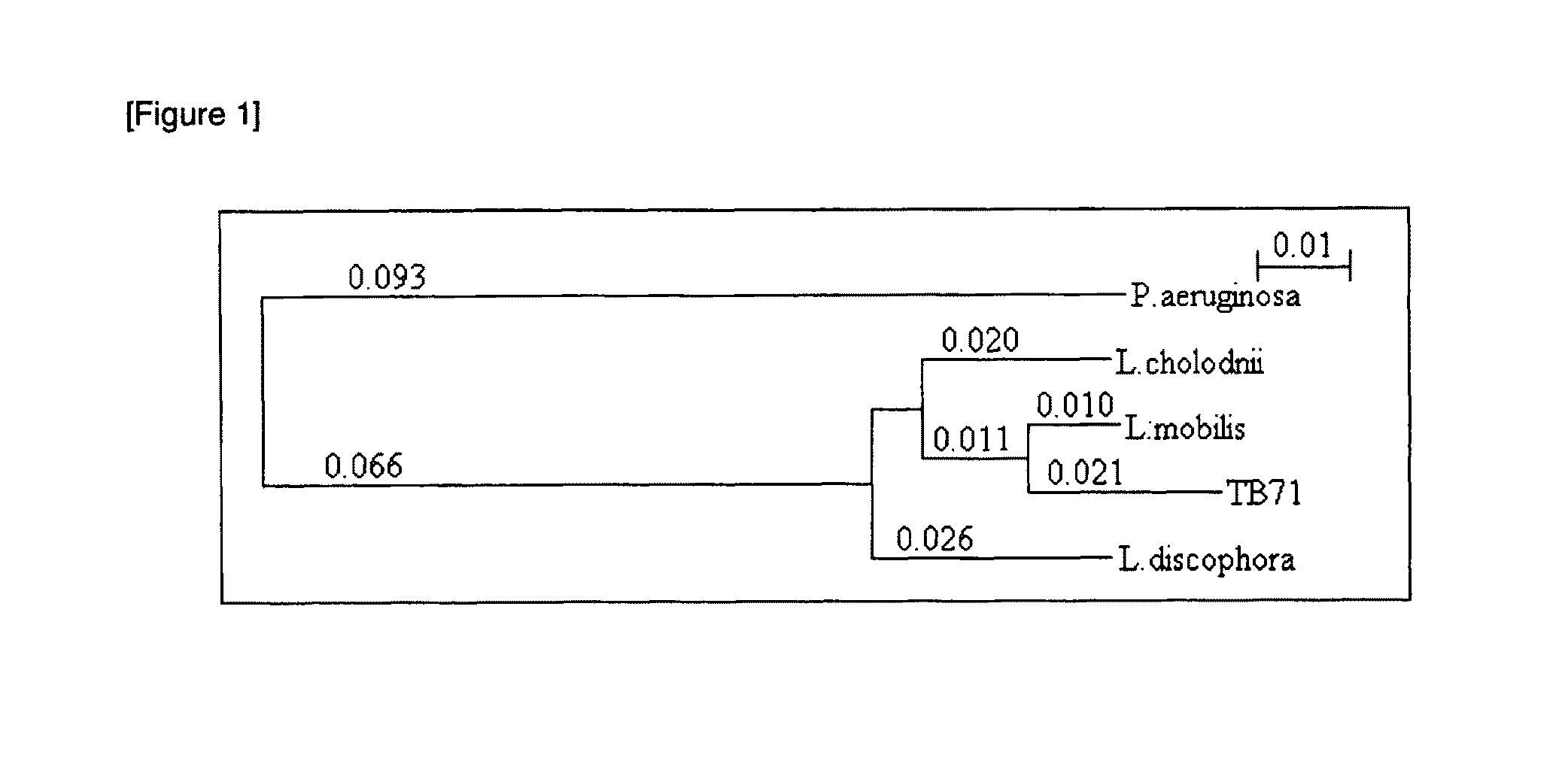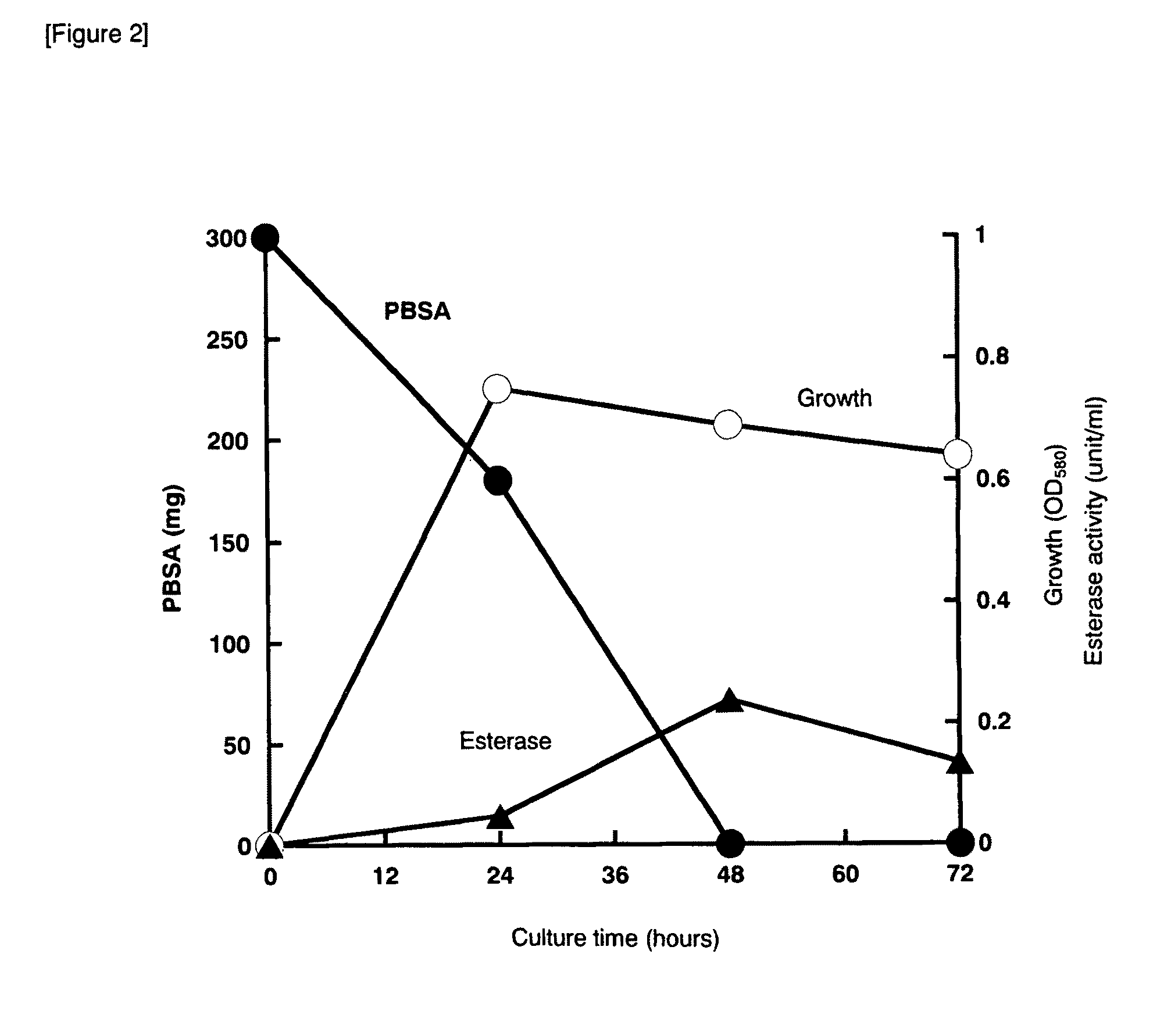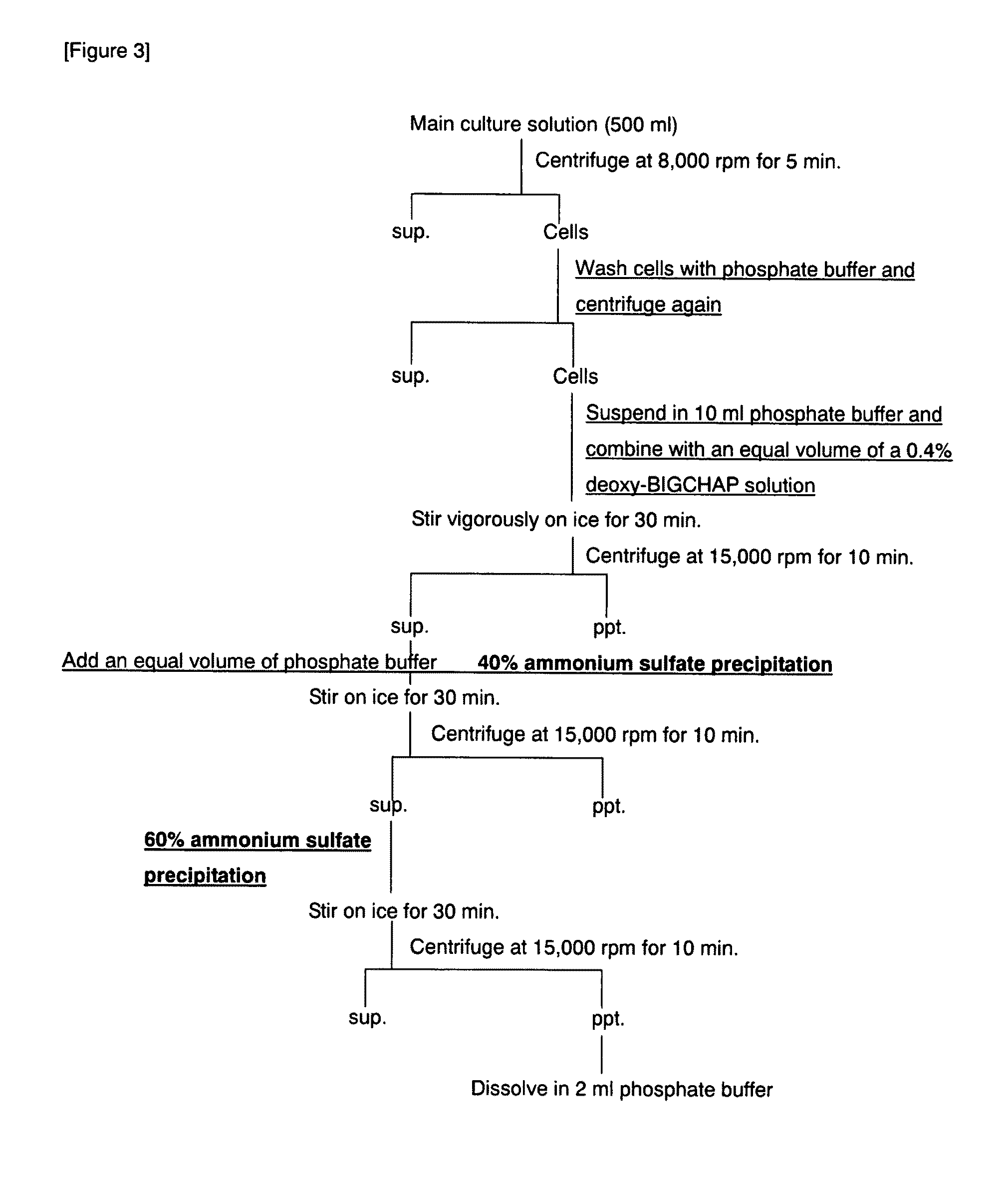Polyester-based-plastic-degrading bacteria, polyester-based-plastic-degrading enzymes and polynucleotides encoding the enzymes
a technology of polyester-based plastics and bacteria, applied in the field of polynucleotides encoding enzymes, polyester-based plastic degrading enzymes and polynucleotides encoding enzymes, can solve the problems of avoiding quality loss, limiting the application of recycled products, and being unable to completely achieve separation collection
- Summary
- Abstract
- Description
- Claims
- Application Information
AI Technical Summary
Benefits of technology
Problems solved by technology
Method used
Image
Examples
example 1
Screening of Microorganisms
Test Polyester
[0090]PBSA was used as a test polyester-based solid plastic. The PBSA used was Bionolle 3020 (average molecular weight: 140,000) manufactured by Showa Highpolymer Co., Ltd., Japan.
[0091]Procedures for Agar Plate Preparation
[0092]PBSA (2 g) was dissolved in 40 ml dichloromethane. This solution was added to 250 ml distilled water containing 40 mg of Plysurf A210G (a surfactant, Daiichi Kogyo Seiyaku Co., Ltd. Japan) and emulsified by stirring with a blender. This emulsion was stirred while being heated at 80° C. in a draft chamber to remove the solvent, and the resulting product was used as emulsified PBSA. An agar medium containing this emulsified PBSA was overlaid onto Nutrient broth (NB) agar plates.
[0093]Screening
[0094]Soil and river samples and activated sludge from water-purification plants around the Kanto region of Japan were used as screening sources. These samples were diluted appropriately with physiological saline and applied onto t...
example 2
Identification of Microorganism
[0098]The full-length 16SrDNA was amplified from a single colony of the strain TB-71 by direct colony PCR using primers specific to 16SrDNA (27F: 5′-AGAGTTTGATCCTGGCTCAG-3′ (SEQ ID NO: 1) and 1494R: 5′-TGACTGACTGAGGYTACCTTGTTAC-3′ (SEQ ID NO: 2)). PCR conditions are as shown in Table 1. The PCR product was ligated to pGEM-T vector and used to transform an E. coli host strain, XL10gold. After overnight culturing on an ampicillin-containing agar plate, the plasmid was extracted from the resulting colonies, and the nucleotide sequence of the insert DNA was determined. A homology search was performed on the resulting nucleotide sequence using the BLAST program to prepare a dendrogram with the Clastal X software.
[0099][Table 1]
[0100]
TABLE 1PCR conditionsReaction cycle94° C. 2 minutes98° C.15 seconds60° C.20 seconds {close oversize brace} 30 cycles74° C. 1 minute
[0101]As a result of the sequencing reaction, about a 640 bp nucleotide sequence was determined o...
example 3
Degradation of Solid PBSA by Strain TB-71
[0102]Bionolle 3020 (300 mg, average molecular weight: 140,000) was shaped into a disk of 25 mm diameter and 0.5 mm thickness and added to a 300 ml Erlenmeyer flask containing 50 ml NB medium. The disk had been soaked in 70% ethanol for 12 hours and then dried in a clean bench before use.
[0103]The strain TB-71 was cultured on a NB agar plate at 30° C. for 24 hours, suspended in physiological saline, and then inoculated at an initial cell concentration of OD580=0.05. After a given period of time, the PBSA disk was collected, washed with distilled water, dried and then weighed. A difference in the weight of PBSA before and after culturing was defined as the degraded amount. To measure esterase activity, p-nitrophenyl acetate was used as a substrate and p-nitrophenol generated upon cleavage of the ester bond was measured by an increase in absorbance at 405 nm. The amount of the enzyme required to generate 1 μmol p-nitrophenol for 1 minute was de...
PUM
| Property | Measurement | Unit |
|---|---|---|
| Volume | aaaaa | aaaaa |
| Mass | aaaaa | aaaaa |
| Mass | aaaaa | aaaaa |
Abstract
Description
Claims
Application Information
 Login to View More
Login to View More - R&D
- Intellectual Property
- Life Sciences
- Materials
- Tech Scout
- Unparalleled Data Quality
- Higher Quality Content
- 60% Fewer Hallucinations
Browse by: Latest US Patents, China's latest patents, Technical Efficacy Thesaurus, Application Domain, Technology Topic, Popular Technical Reports.
© 2025 PatSnap. All rights reserved.Legal|Privacy policy|Modern Slavery Act Transparency Statement|Sitemap|About US| Contact US: help@patsnap.com



